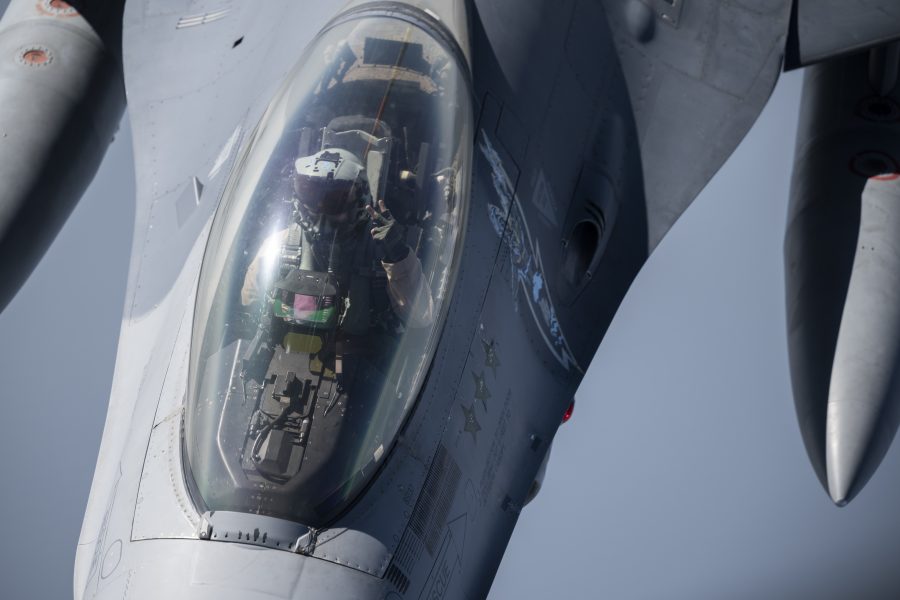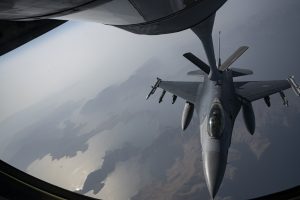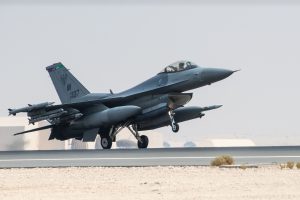There was something different about one of the U.S. fighters that flew over the Strait of Hormuz this past week to deter Iran from seizing oil tankers.
Three green stars are plainly visible on an F-16, tail 2137, in newly released Department of Defense photos of the aircraft over the Strait and at Al Dhafra Air Base, United Arab Emirates. The F-16 is forward deployed to CENTCOM from Aviano Air Base, Italy, as part of the 555th Expeditionary Fighter Squadron.
The F-16s are joined by A-10s and U.S. ships are patrolling the area to deter Iran from seizing commercial vessels, and the Pentagon is sending F-35s, the USS Bataan amphibious assault ship, and Marines to the region in the coming weeks.
But the kill markings on tail 2137 in particular denote one of the most impressive feats of air combat in recent decades: a single-mission triple kill during a NATO 1994 mission over Bosnia and Herzegovina.
According to the Air Force, the mission in 1994 was the first single-mission triple kill by a U.S. Air Force pilot since the Korean War.
“I can confirm that the 555 Expeditionary Fighter Squadron (Triple Nickel) has tail 2137, which is the specific F-16 that has 3x Air-to-Air kills over Bosnia,” Air Forces Central (AFCENT) spokesman Col. Mike Andrews told Air & Space Forces Magazine.
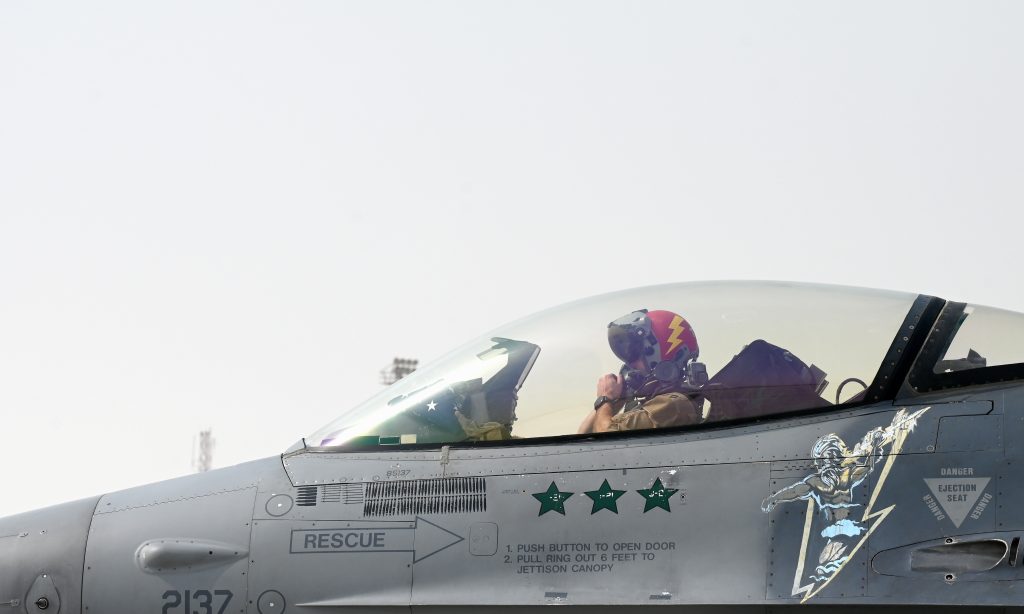
The hat trick of kills took place February 28, 1994, when then-Capt. Robert Gordon “Wilbur” Wright was flying the aircraft as part of Operation Deny Flight, a NATO operation to enforce a U.N no-fly zone during the conflict in the Balkans.
Six Serbian J-21 Jastreb fighters were spotted attacking a factory and two Air Force F-16s of the 526th Fighter Squadron operating out of Aviano engaged them in what came to be known as the Banja Luka incident.
A fourth J-21 was shot down the same day by another F-16, piloted by Capt. Stephen L. “Yogi” Allen. A fifth Serbian J-21 was lost, but the U.S. does not record that as a kill for a U.S. fighter. The incident was the first-ever combat action in NATO history, according to the alliance. Wright downed the planes in minutes using an AIM-120 AMRAAM and two AIM-9 Sidewinders, per the USAF.
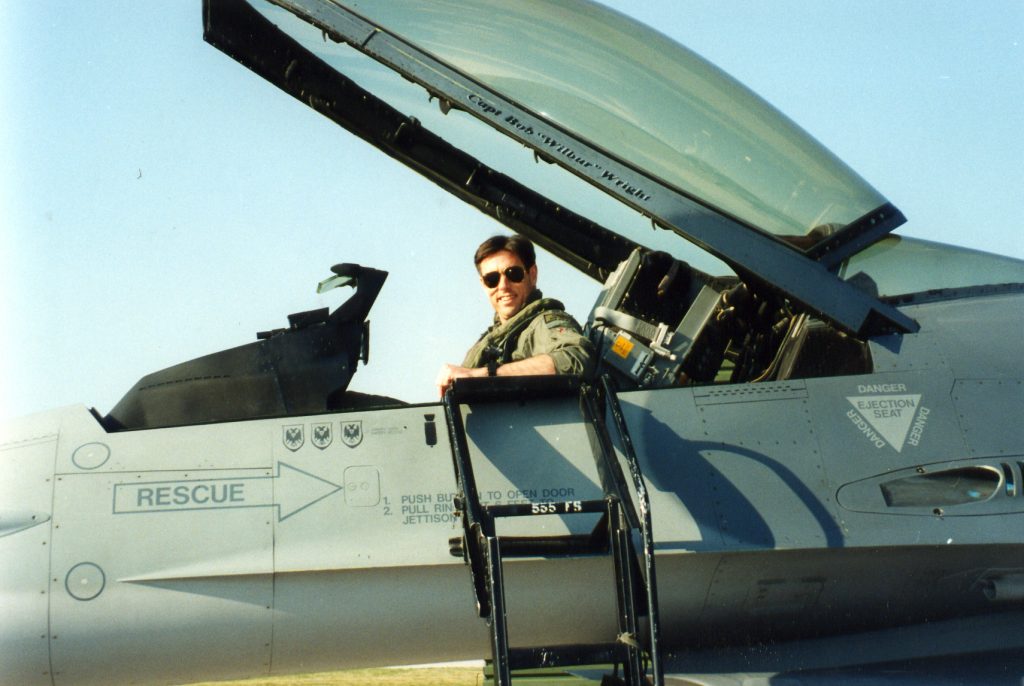
In historical photos released by the Air Force, tail 2137 previously had three kill markings that appear to be a double-headed eagle, the Serbian coat of arms. But those markings have since been replaced by green stars. “Wilbur” Wright’s son, Air Force Capt. Jett Wright, piloted the same aircraft while on Active-duty last year, according to Aviano Air Base public affairs.
Having an aircraft in the active inventory with an air-to-air kill is rare in the U.S. military. The last American air-to-air kill of a manned enemy aircraft was in 2017 over Syria, when a U.S. Navy F/A-18 Super Hornet shot down a Su-22 Syrian fighter the U.S. said was dropping bombs on its Kurdish partners, the Syrian Democratic Forces. At the time, the Pentagon said it was the first time U.S. pilots shot down a manned aircraft since 1999.
